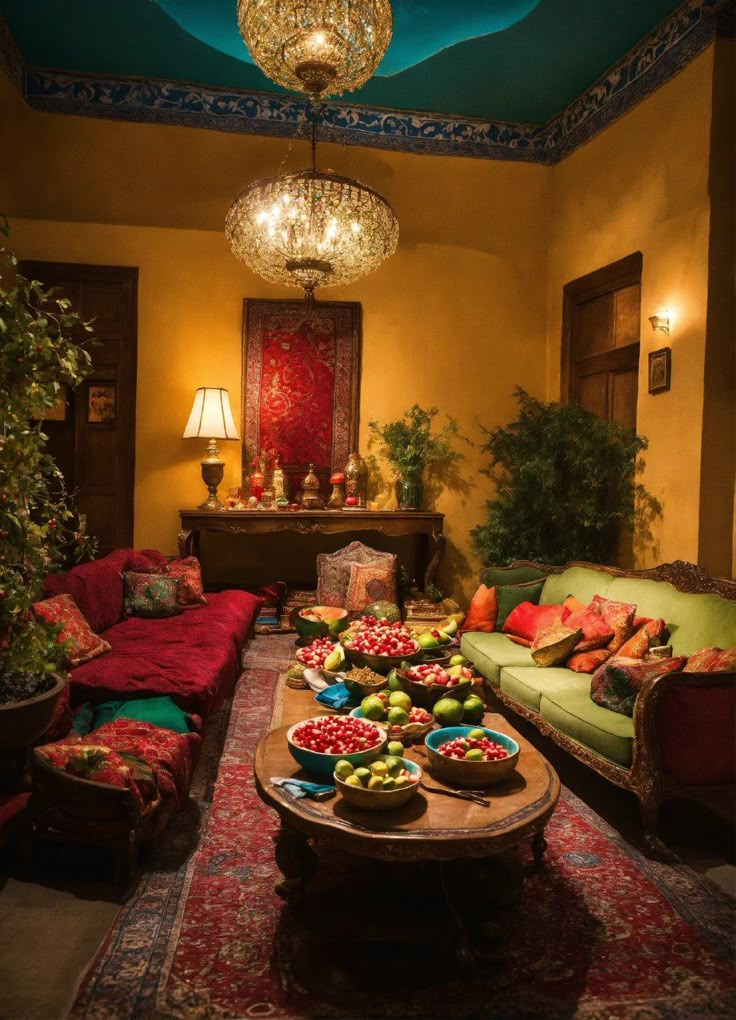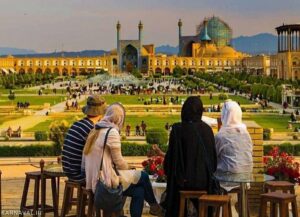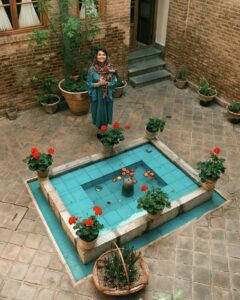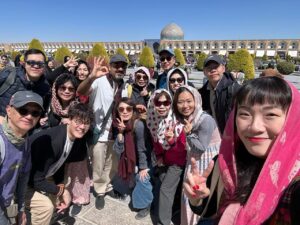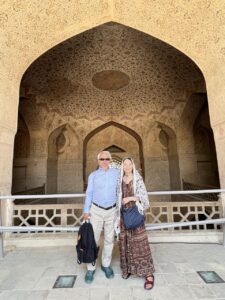Introduction
In the heart of every traditional Iranian home lies a secret world , the courtyard, where architecture becomes poetry. These open spaces, hidden behind adobe walls or intricate wooden doors, are where shade meets sunlight, silence meets laughter, and life unfolds in rhythm with nature. Exploring Iranian courtyards is not just about seeing architecture; it’s about experiencing a philosophy of balance, beauty, and belonging.
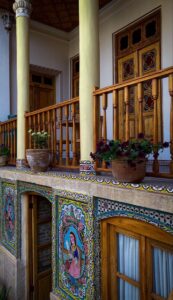
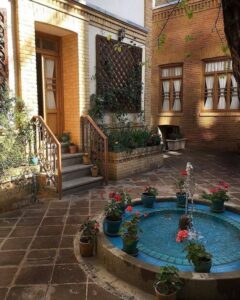
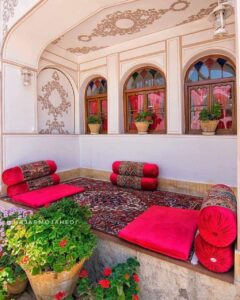
A Living Canvas of Architecture
Iranian courtyards (hayat) are masterpieces of spatial design. Every element , from turquoise-tiled pools to the symmetry of gardens , reflects an ancient understanding of harmony. The walls protect from the desert’s heat, while the central pool mirrors the sky, making the courtyard feel infinite.
In places like Kashan’s Borujerdi House or Yazd’s Dowlatabad Garden, you’ll see how architects used geometry and light to create a sense of serenity that connects humans with nature.
Between Shadow and Light
Sunlight in an Iranian courtyard is never harsh , it dances. The tall walls, windcatchers, and lattice windows create moving shadows that change with time, turning every hour into a different artwork.
In the morning, golden light spills over the pool; by afternoon, soft shade offers a refuge from the sun. Travelers often find these moments deeply meditative , a reminder that beauty can exist in both light and shadow.
Courtyards as the Heart of Home
For centuries, the courtyard has been more than architecture , it is the emotional and social heart of Iranian life. Families gathered here for meals, celebrations, or quiet evening tea. It’s where stories were told, where pomegranates were shared, and where love and loss both found their place.
In cities like Yazd and Isfahan, many boutique hotels and traditional guesthouses have restored these courtyards, allowing visitors to experience this timeless atmosphere firsthand.
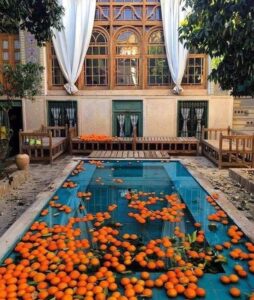
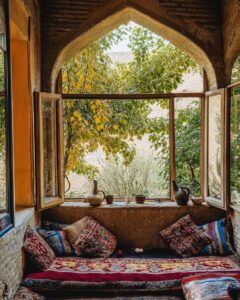
Symbolism and Spirituality
Iranian architecture has always blended function with meaning. The courtyard represents unity: four sides enclosing a center, much like the human heart within the body. The water symbolizes purity, the plants represent growth, and the open sky above connects all things to the divine.
To sit in one of these spaces , hearing the soft trickle of water and the rustle of leaves , is to understand how Iranians have always seen home as a sacred place.
Where to Experience This Art Today
Modern travelers can still feel the soul of this architecture in cities like Shiraz, Kashan, and Yazd. Many traditional hotels , like Narenjestan, Manouchehri House, or Moshir Garden Hotel , offer this immersive experience. Staying in one of these places means waking up to the play of sunlight on turquoise tiles and sleeping under the whisper of the wind through orange trees.
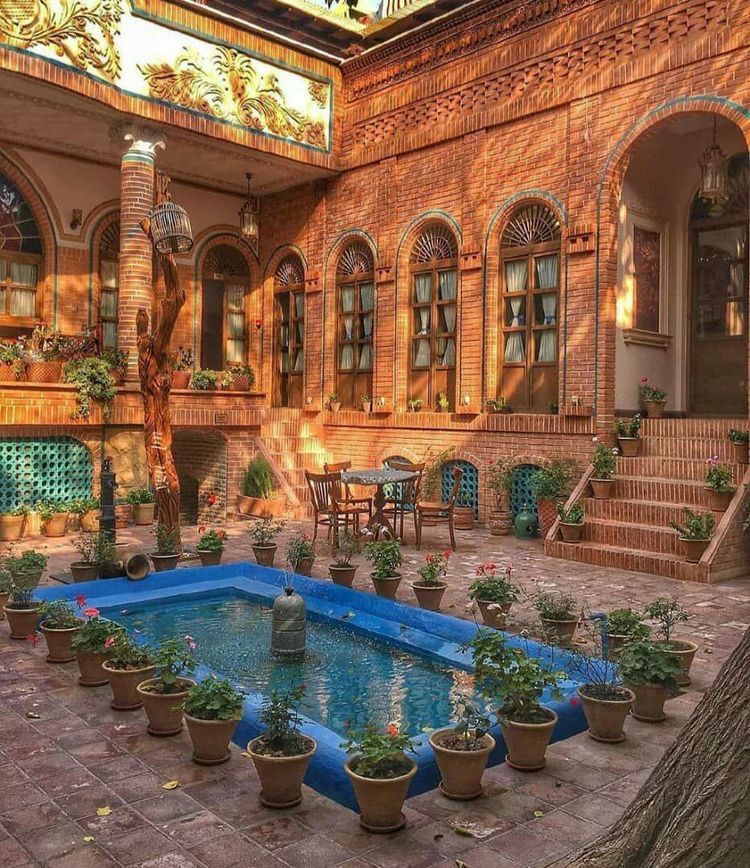
Conclusion
Between shadow and light, Iranian courtyards hold a timeless truth , that beauty is balance, and simplicity can be profound.
To wander through these spaces is to witness the soul of Persian architecture, where every pool reflects the sky, and every shadow tells a story.

